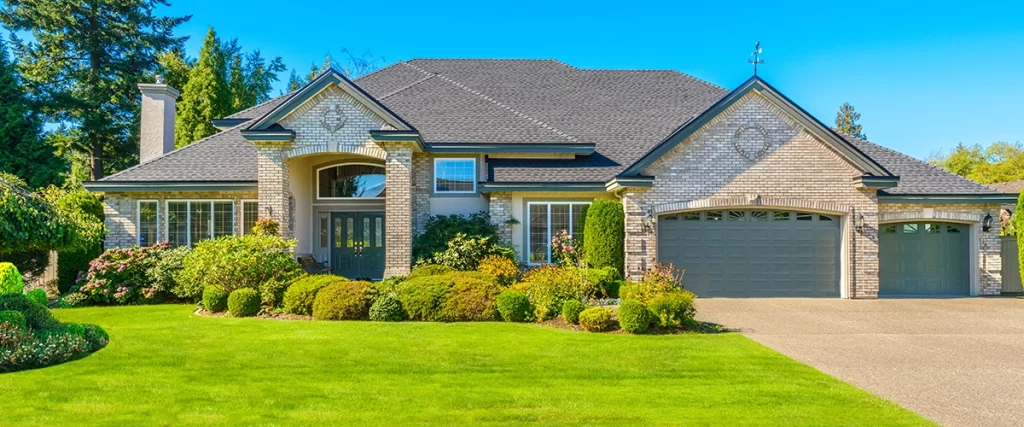If you’re dreaming about building a custom home in Dane County—whether in Sun Prairie, Waunakee, or Cottage Grove—you’ve probably heard about HOA rules. And if you haven’t yet, trust us: you will. For many homeowners, HOA regulations can feel like a maze of restrictions, approvals, and fine print. But they don’t have to be intimidating.
In fact, understanding your local HOA rules early in the custom home planning process can save you time, money, and a whole lot of stress. Whether you’re eyeing a quiet lot in Waunakee or planning to settle down in one of Sun Prairie’s growing communities, this guide will walk you through what you need to know.
Let’s break it all down—without the legal jargon and with your vision front and center.

Why HOA Rules Matter When Building a Custom Home in Dane County
Here in Dane County, homeowners’ associations (HOAs) play a big role in shaping the character of neighborhoods. From architectural styles to landscaping preferences, these organizations help maintain a cohesive look and feel within the community.
But with that structure comes responsibility. If you’re building a custom home, you’ll likely need to follow a set of covenants, conditions, and restrictions (commonly called CCRs). These documents spell out what is and isn’t allowed, and ignoring them can mean costly do-overs.
In Wisconsin, especially in high-growth areas like Sun Prairie and Cottage Grove, HOAs are increasingly involved in the approval process for new home construction. Understanding their expectations early can help you avoid major headaches later.
Common HOA Building Restrictions to Expect
While no two HOAs are exactly alike, most have rules that address a variety of property features. These often include minimum square footage requirements, approved exterior materials and paint colors, roof pitches and types, landscaping guidelines, setback rules, and fence heights.
Additionally, HOAs may regulate garage orientation and size, mailbox style and placement, and even enforce construction timeline limits. These rules are designed to maintain a cohesive look and feel within the community.
In newer neighborhoods, especially, these rules are enforced to preserve property values and maintain consistency across the community.
Neighborhoods in Sun Prairie with HOA Restrictions
Sun Prairie is booming, and with that growth comes planned communities—many of which include HOA oversight. Some neighborhoods with active HOAs and detailed building restrictions include:
1. Providence
Known for its charming streetscapes and family-friendly vibe, Providence requires design approval for any new construction. Expect rules around porch sizes, rooflines, and exterior finishes.
2. Smith’s Crossing
This large master-planned community enforces architectural standards to maintain a cohesive aesthetic. Corner lot orientation and garage placement are frequent review points.
3. Fox Point
Fox Point’s HOA has strict landscaping guidelines, including tree placement and lawn care. The HOA also enforces driveway materials and garage door design rules.
4. Royal Oaks
Here, you’ll need approval on everything from the home’s exterior lighting fixtures to your fencing materials. This HOA also has a strict timeline for project completion.
Waunakee Neighborhoods with Active HOA Rules
Waunakee, often referred to as “the only Waunakee in the world,” blends small-town charm with upscale living, and the HOAs here reflect that standard.
1. Westbridge
Known for its high-end homes, Westbridge has tight controls over design, materials, and placement. Homes must meet specific square footage minimums depending on lot size.
2. Southbridge
This neighborhood emphasizes continuity in appearance. Expect restrictions on siding material, shingle color, and even garage window types.
3. Kilkenny Farms
Setbacks, fencing restrictions, and front porch design elements are all regulated by this HOA. Some lots may also require specific landscaping features.
4. Meadowbrook
The Meadowbrook HOA requires builder submission of detailed plans and enforces consistency in elevation design. Rooflines and chimney design often come under scrutiny here.
Cottage Grove Communities with Building Guidelines
Cottage Grove offers a quieter pace of life, but that doesn’t mean HOA rules take a back seat. Several neighborhoods have detailed design standards you’ll need to follow.
1. Westlawn Estates
Here, you’ll find rules on everything from exterior paint colors to driveway materials. The HOA is known for preserving the neighborhood’s architectural style.
2. The Vineyards at Cambridge
Custom homes in this neighborhood must adhere to strict CCRs that include guidelines on exterior brick or stone percentages and chimney placement.
3. Shady Grove
HOA rules focus on landscaping uniformity and roof types. Solar panel installation must be approved prior to construction.
What You Need to Do Before You Build
So what’s the first step? Before you even break ground, here’s what you should do:
1. Request and Review the HOA’s CCRs
These are public documents, and you can usually get them from the HOA itself or through your developer or real estate agent.
2. Submit Architectural Plans for Approval
Most HOAs require formal submission of your home plans for review. You may need to include site layout, materials list, elevations, and even color swatches.
3. Talk with the HOA Board or Architectural Review Committee
Yes, you can talk to them directly—and you should. Having a conversation can clear up ambiguity and make the process smoother.
4. Understand Your Rights
Wisconsin law offers some protections for homeowners, including the right to appeal unreasonable denials. Wisconsin Statute Chapter 703 governs condo and HOA laws.
Tips for Navigating HOA Restrictions Smoothly
Start early. Don’t wait until you’ve finalized your design—get HOA input while you’re still in the planning phase.
Hire professionals who’ve worked with local HOAs. That includes architects and designers who understand Dane County’s nuances.
Keep good records. Always document communications with your HOA and retain approval letters.
Be respectful, but assertive. Your dream home matters. If something doesn’t make sense, ask questions or request clarification.
Best Exterior Product Manufacturers for HOA-Approved Custom Homes
When you’re building in an HOA-restricted neighborhood, choosing the right products matters. The best manufacturers combine durability, beauty, and the compliance you need.
James Hardie – Known for fiber cement siding that’s durable, low-maintenance, and HOA-approved in many Dane County neighborhoods.
CertainTeed – Offers a wide range of vinyl and composite siding options that meet most neighborhood aesthetic standards.
Andersen Windows – High-quality, energy-efficient windows that fit traditional and modern styles, often accepted by HOAs.
Owens Corning – Their shingles are not only long-lasting but come in a variety of HOA-friendly colors and textures.
Trex – For outdoor decks and railings, Trex’s composite materials check both performance and appearance boxes.

FAQ: HOA Rules for Custom Homes in Dane County
How do I find out if a property is part of an HOA?
You can usually ask your real estate agent, builder, or search the Dane County Register of Deeds online database.
Can an HOA deny my home design?
Yes—if it doesn’t meet the CCRs. But they must follow their own review procedures and give you a chance to revise.
Can I fight an HOA decision?
Absolutely. You can appeal within the HOA structure, and in some cases, take legal action if the rules aren’t applied fairly.
What if I want solar panels or an EV charger?
Check your HOA’s guidelines. Wisconsin encourages green energy, but HOAs may require you to submit special requests for approval.
Is landscaping really that important to HOAs?
It is! Many require a minimum number of trees, lawn types, or even specific species. Make sure to factor it into your budget.
Final Thoughts: Building Smart in HOA Neighborhoods
If you’re planning to build a custom home in Dane County, don’t let HOA rules feel like a barrier. Instead, see them as a guide to building something that not only fits your vision—but enhances the whole community.
The key is preparation. Know the rules, build relationships with your HOA board, and choose materials and designs that meet both your needs and your neighborhood’s standards.
Need help planning your custom home with HOA compliance in mind? Contact us at (608) 839-0620 to start the conversation. We’re here to make the process as smooth and stress-free as possible.
